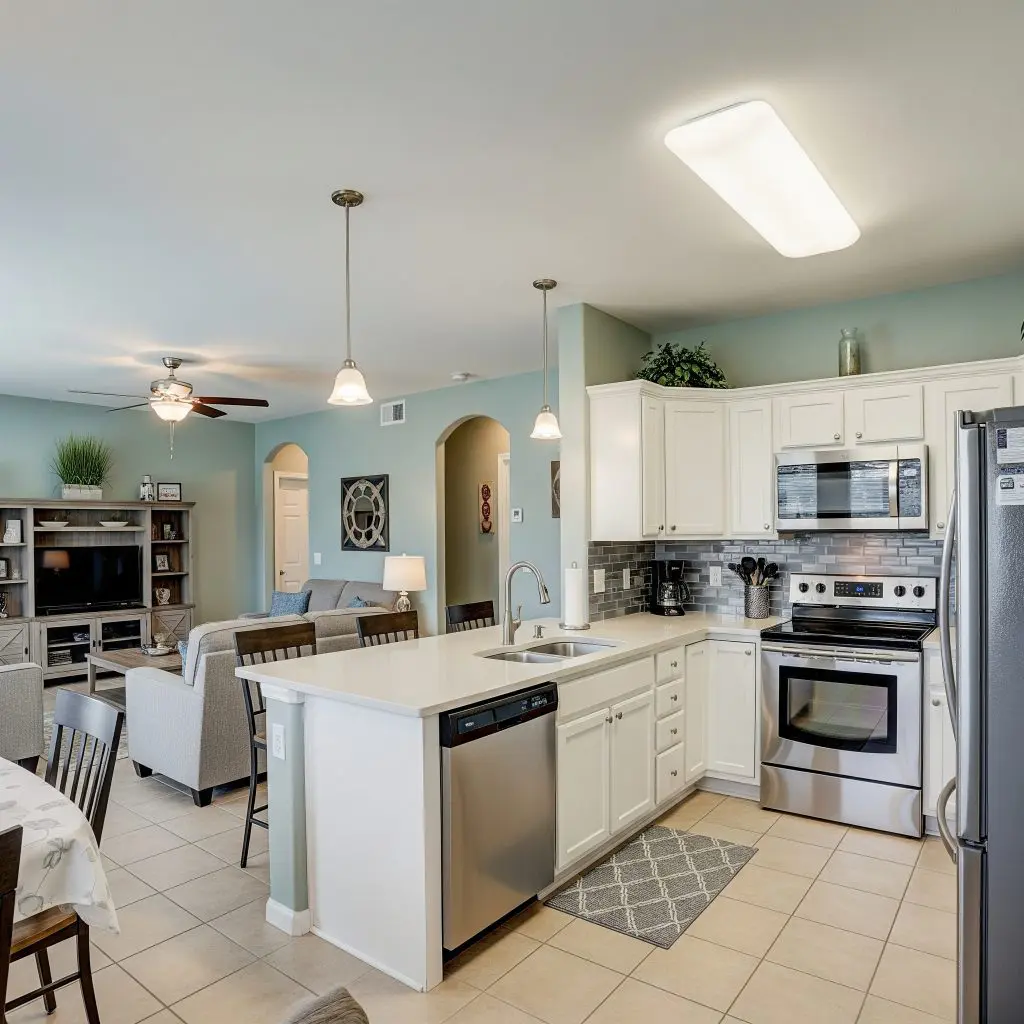Illinois Inflation Budgeting & Real Estate Investment Guide 2025: State-Specific Strategies
Illinois, the economic powerhouse of the Midwest, presents unique opportunities and challenges for residents and investors navigating the evolving landscape of inflation and real estate in 2025. As high inflation continues to reshape local economies across the US, it is vital to develop state-specific budgeting strategies and make informed real estate investments to preserve and grow your wealth in Illinois. This guide delivers a comprehensive, actionable analysis tailored to Illinois’s economic climate, cost structures, population trends, and real estate markets.
- Illinois Inflation Budgeting & Real Estate Investment Guide 2025: State-Specific Strategies
- Understanding 2025 Illinois Economic Indicators & Inflation Trends
- State-Specific Budgeting Considerations During High Inflation
- Best Real Estate Investment Opportunities: 2025 Illinois Focus
- Illinois Local Real Estate Opportunity Breakdown
- Illinois Regulatory Environment & Investment Incentives
- Population Growth, Demographic Patterns, and Economic Drivers
- Inflation Hedging with Suburban Real Estate in Illinois
- 2025 Illinois Real Estate Forecast & Growth Corridors
- Illinois Real Estate Success Stories
- Conclusion
Understanding 2025 Illinois Economic Indicators & Inflation Trends
- Inflation Rate: Illinois saw a year-over-year inflation rate averaging 5.1% in early 2025, slightly higher than the national average due to increased energy and food prices in the Midwest.
- Cost of Living: Illinois has a composite cost of living index of 94.2 (US average = 100), but urban centers like Chicago trend above 100, while many downstate regions are significantly lower.
- Unemployment Rate: As of Q1 2025, Illinois’s unemployment rate stands at 4.7%, a modest improvement driven by manufacturing recovery and continued strength in healthcare and logistics.
- Population Growth: Illinois experienced slight net population loss for several years, but 2025 marks an encouraging stabilization, with modest growth in suburban and smaller metro areas.
State-Specific Budgeting Considerations During High Inflation
Cost of Living Adjustments
- Housing: Median home prices (Q2 2025): $286,000 statewide, $347,000 in metro Chicago, $180,000 Springfield, $145,000 Rockford.
- Utilities: Illinois maintains lower-than-average utility costs ($155/month for standard usage), moderated by access to local energy sources.
- Property Taxes: Among the highest in the nation: State average effective property tax rate is 2.16%. This significantly impacts homeownership and real estate returns.
- Transportation: Robust public transit in Chicago offsets higher costs elsewhere; average transportation costs vary greatly between urban and rural/suburban areas.
Inflation Budgeting Strategies Tailored for Illinois
- Prioritize Fixed-Rate Debt: Mortgage holders and investors should lock in fixed rates to shield against rising costs.
- Scale Back Discretionary Expenses: Consider state-level tax credits for energy-efficient home improvements—save on utilities and benefit from incentives.
- Rethink Commuting: Use reliable public transit in Chicago and suburban rail corridors to limit transportation-affected costs.
- Leverage Local Food Sources: Illinois boasts abundant farmers markets and local agriculture—reduce grocery inflation impacts by sourcing locally.
- Plan Property Tax Escrows: Illinois’s high effective rates require vigilant budget planning—ensure monthly savings cover increasing assessments.
Best Real Estate Investment Opportunities: 2025 Illinois Focus
Emphasis: Suburban Family Housing Growth
2025 spotlights Illinois’s suburban family housing as a resilient, high-potential real estate segment. The equation includes migration patterns from major cities to commuter-friendly suburbs, new hybrid work policies, and family-driven preferences.

Major Metropolitan Area Analysis
- Chicago Metro: While urban rental demand remains, family buyers are fueling growth in suburban counties: DuPage, Lake, Will, and Kane. Top school districts and access to Metra lines make towns like Naperville, Elmhurst, and Western Springs prime for appreciation and stable rental income.
- Collar Counties: Towns such as Geneva, Wheaton, and Oswego report strong demand for 3-5 bedroom homes, with price increases of 6-8% year-over-year (above inflation).
- Springfield & Peoria: Affordable single-family inventory, high rental yields (7-9% gross), and moderate property taxes by local standards.
- Champaign-Urbana: Anchored by the University of Illinois, hybrid demand for both student rentals and young family housing supports price stability.
Market Conditions & State Policy Impacts
- Illinois Real Estate Market Projections: Suburban family home inventories remain tight. Multiple-offer situations common near Chicago in strong school districts.
- State Housing Policies: The Illinois Housing Development Authority (IHDA) expands low-to-moderate income and first-time buyer programs, injecting further demand into the market for affordable, family-sized housing.
- Climate Resilience: While northern Illinois is less prone to climate extremes, careful appraisal of floodplains in river-adjacent suburbs is key.
- Infrastructure Improvement: Continued investment in suburban highway expansions and Metra capacity boosts access to high-growth towns.
Illinois Local Real Estate Opportunity Breakdown
Suburban Family Housing Hotspots
- Naperville: Median price: $535,000; Top-tier public schools and strong community amenities. Strong demand from relocating families drives low vacancy and above-average appreciation.
- Arlington Heights: Proximity to O’Hare, vibrant downtown, and excellent schools position this city for continued price growth.
- Geneva and Batavia: Historic towns on the Fox River attracting high-income buyers and investors seeking premium rental property returns.
Emerging Secondary Markets
- Joliet & Plainfield: Lower entry points and robust logistics sector employment. Rental property demand surges for workforce housing, single-family rentals see 10%+ increases in rent YOY.
- Rockford: Affordable buy-in for first-time investors; watch for city incentives and improvement districts boosting neighborhoods adjacent to downtown.
Rental Market Overview
- Suburban single-family homes are now the highest-demand rental segment, especially 3-4 bedrooms with garages and yards.
- Chicago’s core remains strong for multi-family investments, but rent controls and stricter ordinances make returns more predictable than speculative.
Example Investment: Case Study – Naperville, IL
- Property: 4BR Single-family home in Cress Creek neighborhood (Naperville)
- Purchase Price (2025): $610,000
- Annual Gross Rental Income: $39,000 (well-above mortgage + taxes due to low vacancy)
- Annual Expenses (incl. taxes): $15,500
- Net Yield: 3.8% (plus property value appreciation of 6-7% projected through 2026)
Illinois Regulatory Environment & Investment Incentives
- Property Tax Credits: Homeowner exemptions, senior exemptions, and occasional freezes on assessed increases help owner-occupants partially offset high taxes.
- IHDA Down Payment Assistance: Up to $10,000 for first-time buyers creating new demand for entry-level and move-up suburban homes.
- Energy Efficiency Grants: Green retrofits eligible for state grants improve marketability and lower operating costs for single-family rentals.
Population Growth, Demographic Patterns, and Economic Drivers
- Chicago metro area remains a net job creator: Tech, finance, healthcare, and logistics sectors drive demand for suburban living.
- Smaller metros like Springfield, Peoria, and Champaign-Urbana benefit from “Zoom Town” trends (remote and hybrid workers seeking affordable family living).
- Illinois’s diverse population (over 12.5 million) provides steady demand across all housing segments, with suburban growth outpacing urban in 2024-25.
Inflation Hedging with Suburban Real Estate in Illinois
- Rental Rate Escalation: Annual rental increases (5-7%) track well with state inflation, protecting returns.
- Asset Appreciation: Limited suburban inventory and continuing migration out of core urban areas fuels steady price gains above inflation.
- Fixed-Rate Mortgages: Locking in rates now provides a hedge as inflation lifts nominal home values but leaves mortgage payments stable.
- Tax Advantages: Depreciation, mortgage interest deductions, and Illinois-specific tax credits support after-tax returns.
2025 Illinois Real Estate Forecast & Growth Corridors
- Suburban Boom Continuation: Single-family housing in metropolitan Chicago’s suburbs leads appreciation and yield due to lingering inventory shortages.
- Long-Term Infrastructure Investment: Multi-billion dollar projects (I-294 expansion, new Metra stations) will further enhance suburban property accessibility and values.
- Downstate Opportunities: Investors seeking higher gross yields and lower entry points should target secondary markets but balance with slower long-term appreciation than the Chicago collar counties.
Illinois Real Estate Success Stories
Case Study: Growing a Portfolio in the Western Suburbs
In Wheaton, an investor acquired three mid-century 3BR homes in 2022-23, investing $75,000 in green retrofits. By mid-2025, all units achieved 100% occupancy with rents growing 8%+ per year, even as inflation climbed. Tax credits and consistent family demand insulated cash flows, validating suburban family housing as the best inflation-resistant strategy in Illinois.
Need capital? GHC Funding offers flexible funding solutions to support your business growth or real estate projects. Discover fast, reliable financing options today!
Test Your Expertise: The Complexities of the 1031 Exchange

As a sophisticated real estate investor, you understand that the 1031 Exchange is a cornerstone strategy for tax deferral and wealth accumulation. But beyond the basics, the intricacies of the 1031 Exchange rules can pose significant challenges. This quiz is designed to test your in-depth knowledge and highlight critical nuances that separate casual investors from true experts in 1031 Exchange transactions.
Instructions: Choose the best answer for each question.
⚡ Key Flexible Funding Options
GHC Funding everages financing types that prioritize asset value and cash flow over lengthy financial history checks:
-
Bridge Loans: These are short-term loans used to "bridge the gap" between an immediate need for capital and securing permanent financing (like a traditional loan or sale). They are known for fast closing and are often asset-collateralized, making them ideal for time-sensitive real estate acquisitions or value-add projects.
-
DSCR Loans (Debt Service Coverage Ratio): Primarily for real estate investors, these loans are underwritten based on the property's rental income vs. debt obligation ($\text{DSCR} = \text{Net Operating Income} / \text{Total Debt Service}$), not the borrower's personal income or tax returns. This offers flexibility for those with complex finances.
-
SBA Loans: The Small Business Administration (SBA) guarantees loans offered by partner lenders. While providing excellent terms (long repayment, lower rates), the application process is typically slower than private/bridge funding, often making them less suitable for immediate needs. SBA eligibility heavily relies on the DSCR metric for repayment assessment.
🌐 Learn More
For details on GHC Funding's specific products and to start an application, please visit their homepage:
The Ultimate DSCR Loan for Rental Property Quiz

Are you looking to expand your real estate investment portfolio? A DSCR loan might be the perfect tool to help you achieve your goals without relying on traditional income documentation. Test your knowledge with this quiz to see if you're ready to master the intricacies of a DSCR loan for rental property.
Conclusion
Budgeting for inflation in Illinois means accounting for high property taxes, regional cost differences, and the need for resilient, inflation-hedged assets. Suburban single-family housing, especially in top school districts and growth corridors, offers the best combination of appreciation, rental demand, and inflation protection. Stay informed on local policy shifts, population trends, and infrastructure projects to seize new opportunities as Illinois continues to evolve in 2025 and beyond.
Get a No Obligation Quote Today.
✅ Real Estate Investor Resources
-
AirDNA (Short-Term Rental Data)
https://www.airdna.co - Rentometer (Rent Comps)
https://www.rentometer.com - Zillow Research & Data
https://www.zillow.com/research
DSCR Loan IQ Quiz!

Test your knowledge of Debt Service Coverage Ratio (DSCR) loans!



